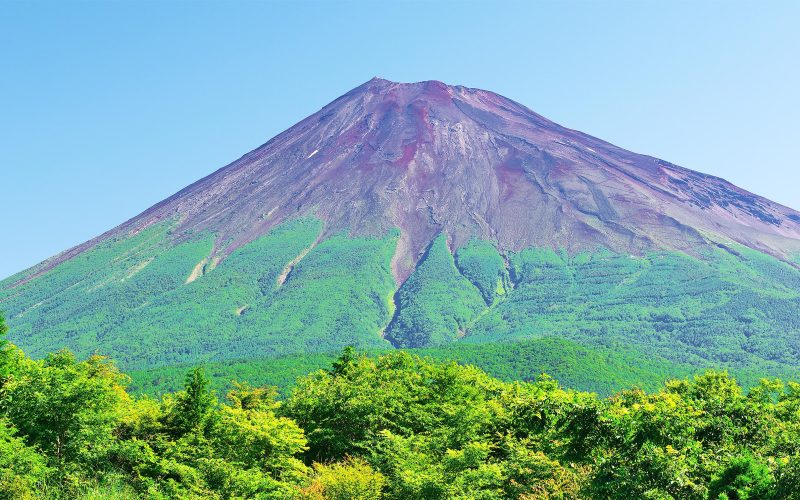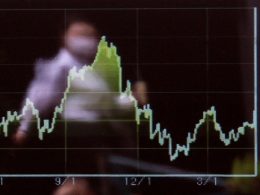In the quiet summits of Japan’s Mount Fuji, October 2023 brought an unprecedented record: no snowfall, for the first time since measurements began in 1894.
Across Japan, October temperatures soared 2.21°C above the average of the last three decades, marking the hottest October in 126 years.
The Japan Meteorological Agency attributed this to high-pressure systems and other atmospheric shifts—but these changes are anything but natural.
Climate change has tightened its grip on the globe, sending even the most isolated regions spiraling into an ecological crisis. If we ignore these glaring signs, we may face irreversible damage sooner than we think.
The unsettling changes are not unique to Japan. Half a world away in Antarctica, climate change has caused the icy wilderness of the Antarctic Peninsula to “green” as never before. Mosses, usually a rare sight, have colonized this once-frozen terrain at an alarming rate. In just 35 years, plant cover has expanded nearly twelvefold, accelerating dramatically since 2016.
This greening isn’t a pleasant transformation—it’s a symptom of warming that threatens native Antarctic species, opening the door to invasive plants and disrupting a fragile ecosystem that has withstood millennia of isolation. As carbon levels rise, Antarctica’s transformation into a potential breeding ground for nonnative species is a brutal reminder that no place is safe from climate change’s reach.
The creeping impact of global warming extends beyond the poles. In New Delhi, the day after Diwali saw the city earn the dubious distinction of becoming the world’s most polluted city. Despite a blanket ban on firecrackers, the sky over India’s capital filled with a thick, toxic haze that brought AQI levels to a hazardous 359.
In some neighborhoods, PM2.5 levels—a marker for fine particulate matter—skyrocketed to 900 micrograms per cubic meter, nearly forty-five times the World Health Organization’s recommended safe limit. For Delhiites, breathing on the morning after Diwali was akin to smoking nearly forty-five cigarettes in a single day. This alarming air quality, aggravated by unchecked human activity, is a reminder of how dangerously close urban centers are to becoming uninhabitable.
A World on Fire—Flooded, Battered, and Barely Breathing
In Spain, flash floods tore through towns in October, upending homes, claiming lives, and devastating communities in ways few had ever experienced before. These are not sporadic, isolated events—they are a harbinger of what scientists call “climate whiplash,” where weather patterns shift from extreme droughts to intense flooding with little warning.
For countries like Spain, this cycle is more than a tragedy; it’s perhaps pointing to a new normal, driven by rising global temperatures that disrupt rainfall patterns and intensify weather systems.
In the Atlantic, hurricanes have reached unprecedented strength. Warmer ocean waters fuel these storms, giving them greater energy, leading to higher wind speeds, heavier rainfall, and, consequently, more destruction when they make landfall.
Across the globe, from Hurricanes in the United States to Typhoons in East Asia, these storms are striking with increased ferocity. Coastal communities that once relied on seawalls and levees now face the prospect of wholesale relocation as their defenses fail against storms supercharged by human-induced warming.
Wildfires are also burning with an intensity never seen before, devastating regions like the Mediterranean, North America, and Australia.
In the past decade, fires have turned millions of acres into scorched wasteland, destroyed entire ecosystems, and filled the skies with harmful particulates that impact air quality thousands of miles away.
These fires are fueled by prolonged droughts and hotter temperatures, both of which are linked to global warming. In places like the Amazon and Siberia, fires destroy not just forests but critical carbon sinks—natural systems that absorb carbon dioxide. With each tree that burns, we lose a crucial ally in our fight against climate change.
The Human Factor, We Are the Catalyst
At the root of this environmental collapse is our own footprint.
Human activity, particularly the burning of fossil fuels, deforestation, and industrial agriculture, has increased the concentration of greenhouse gases in the atmosphere to levels unseen in at least 800,000 years.
Carbon dioxide, methane, and nitrous oxide—each a byproduct of human activity—are trapping heat in our atmosphere, disrupting natural climate cycles, and pushing the earth’s systems to a breaking point.
Scientists have long warned that the Earth’s climate systems are deeply interconnected. A warming ocean isn’t just a localized problem; it affects global weather patterns, melting glaciers, and driving storms. As we drive these changes, we are endangering not only our ecosystems but our very survival.
Animals and plants are among the first to suffer. In Antarctica, mosses now cover areas once bound by snow and ice, and scientists warn that warmer temperatures could allow invasive species to take hold, threatening the native species that have evolved in extreme isolation.
In tropical forests, temperature and humidity shifts are driving biodiversity loss, with species unable to adapt quickly enough to survive. If we lose these ecosystems, we aren’t just losing animals—we are losing vital components of our global climate system, as these ecosystems provide services like pollination, water purification, and carbon storage.

What We Must Do to Survive
We have the knowledge and the tools to mitigate this crisis, but what we lack is the collective will to implement them on the scale required. To curb climate change, we must take decisive steps and fast.
Cut Carbon Emissions: Governments must prioritize carbon reduction by setting stringent emissions standards, especially for the biggest polluters: energy, transportation, and industry. Investing in renewable energy sources such as wind, solar, and hydropower is crucial to weaning off fossil fuels. We cannot continue to rely on coal and oil without condemning future generations to uninhabitable conditions.
Protect and Restore Ecosystems: Forests, oceans, and wetlands act as natural buffers against climate change by absorbing carbon dioxide and stabilizing the climate. Efforts like reforestation, halting deforestation, and protecting marine ecosystems can help absorb some of the carbon we emit. Every hectare of forest we save is an investment in a more stable future.
Shift Agriculture and Consumption: Industrial agriculture is a major contributor to greenhouse gas emissions. By reducing meat consumption, supporting regenerative farming practices, and minimizing food waste, we can decrease emissions and reduce pressure on land and water resources.
Prepare for Climate Resilience: We must accept that some level of change is now inevitable and start adapting our infrastructure to withstand these impacts. Coastal areas will need stronger defenses against rising seas, agricultural regions will need to shift to crops that can survive changing climates, and urban centers must invest in green infrastructure to combat extreme heat and flooding.
Support Animal Welfare and Biodiversity: The planet’s wildlife is more than a bystander in this crisis. Preserving biodiversity is critical not only for the animals themselves but also for the ecosystems that support human life. Creating wildlife corridors, protecting critical habitats, and supporting sustainable wildlife management are essential.
The Clock Is Ticking
The planet’s signs of distress are growing clearer and more urgent. These aren’t isolated incidents—they are pieces of a jigsaw puzzle that reveal a planet in crisis.
Temperatures that have never been this high, ecosystems shifting beyond recognition, air that suffocates rather than sustains—each of these is a loud and urgent warning that our environment is reaching its limits.
The science is clear, the evidence irrefutable: Earth’s delicate ecosystems are faltering under the strain of relentless human activity. Japan’s October heat, the greening of Antarctica, and Delhi’s hazardous air quality aren’t freak events; they’re harbingers of a potential future where climate catastrophe becomes a daily reality.
If we continue to ignore the scientific consensus and our own responsibility in creating this catastrophe, we are hurtling toward a future where survival, not prosperity, will be the question of our time.
Our actions today will determine the world we leave to future generations. We are not helpless, but we must act now, decisively and together. The only question that remains is whether we’ll heed this final warning before it’s too late. Climate change is not just an environmental issue; it’s the existential challenge of our era, and time is running out.










